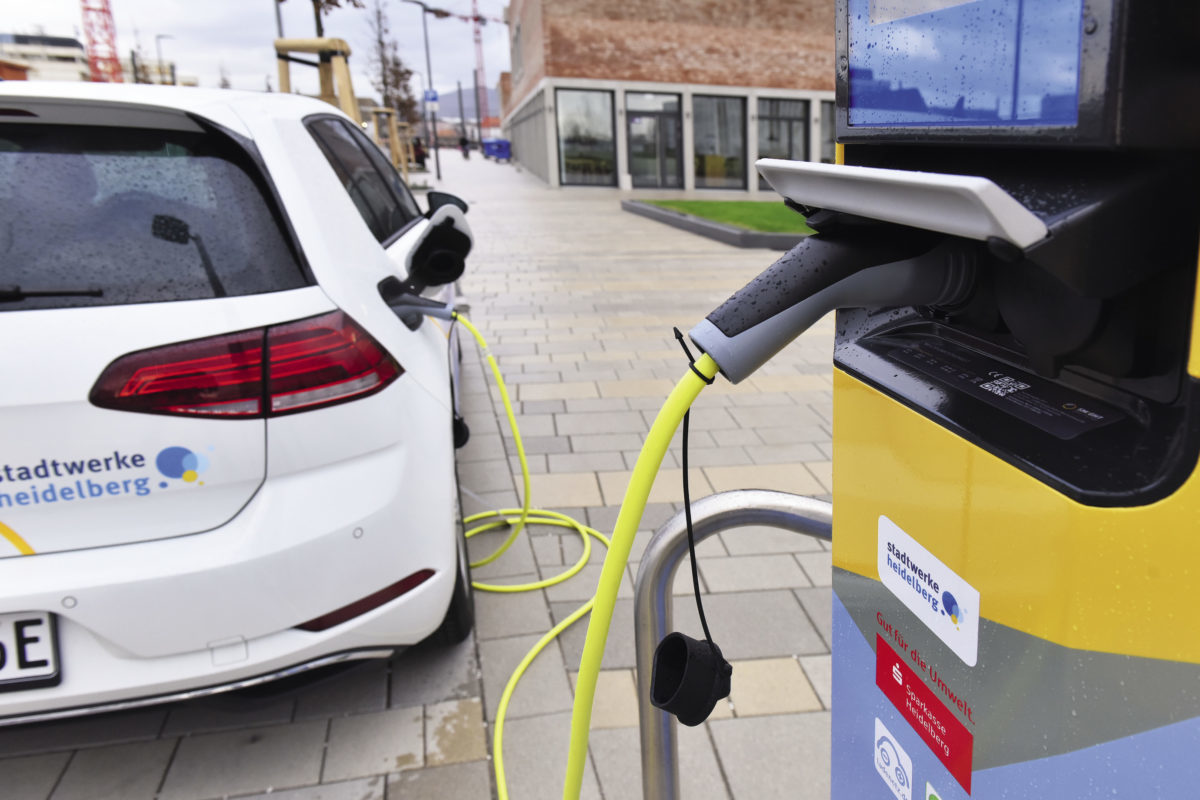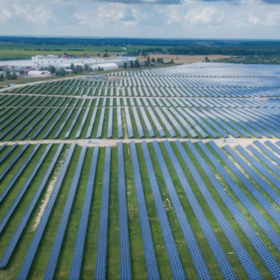From pv magazine Global, May edition
By 2025, roughly 11 million electric vehicles (EVs) are expected to be sold worldwide, corresponding to 11% of predicted annual global light duty vehicle sales. The emergence of electric vehicles (EVs), however, is not only shaking up the automotive industry. Through the increased electrification of the transport sector, a growing interlink to the power market is being established, leading to new opportunities and challenges for stationary energy storage players.
On the one hand, a surge in EVs can lead to elevated peak loads from simultaneous charging patterns, in particular when high power is required for fast charging. Stationary storage is a proven flexibility option to mitigate the impact of those peaks on the grid, and could therefore benefit from the increasing EV boom.
On the other hand, an EV comes with a built-in storage capacity of its own: 11 million EVs would correspond to more than 1,000 GWh of batteries deployed in one single year, dwarfing the approximate 90 GWh of cumulative stationary storage installations expected by 2025. If only a fraction of this ‘storage capacity on wheels’ would enter the market, the impact on incumbent players would be seemingly massive.
V2G competes with stationary?
Instead of being a mere consumer of electricity, EVs could feed electricity back into the grid if and when needed to provide grid services such as frequency control. This is called ‘vehicle-to-grid’ or ‘V2G,’ with the abbreviation stressing the fact that bidirectional electricity flows are involved. This is not science fiction – but it comes at a cost.
V2G technology has been tried and tested for over a decade in increasing project sizes. Nevertheless, the market is still at an early demonstration stage. Activity is dominated by a handful of players, mostly Japanese carmakers, and concentrated in a few selected markets, mainly in Europe and North America. So, what is holding back adoption today?
First, it does not come for free. To support bidirectional power flows, additional hardware has to be added both to the vehicle and the charge point, creating additional up-front costs. Second, V2G could impact the lifetime of the EV battery due to accelerated degradation from increased cycling, adding to the total cost of ownership – although control algorithms can easily mitigate the impact significantly. Last but not least, people are used to the freedom of driving their car whenever they want, and not only when pre-agreed schedules for V2G services allow for it. The (perceived) loss of freedom causes additional opportunity cost for the car owner.
To make things worse, it can be tough for EV owners to monetize the flexibility added to the grid. Suitable market frameworks are still limited in many jurisdictions. Where those frameworks exist, EVs are often not allowed to participate due to regulatory barriers. And where market access is granted, obtainable revenues might turn out to be insufficient to compensate for the additional costs of V2G. Limited interoperability can be a further hurdle. Real-time communication between grid operator, charging equipment, and vehicle requires unified standards. This is not always the case.
However, as the number of EVs on the road is increasing, governments and regulators around the world will be highly incentivized to exploit the additional flexibility option of V2G by establishing new markets and providing access through suitable regulations – or even through mandatory requirements for EVs to be ‘V2G-ready.’ Such a requirement established in a major car market like China would not only impact the local OEMs, but also car manufacturers around the world that wish to continue selling into this market.
With increasing demand for the required components, standardization will improve and economies of scale will kick in. Due to falling costs for hardware, the economic case for a car owner participating in V2G will improve, increasingly outweighing potential disadvantages of a reduced battery lifetime or limitations in car availability. In the longer term, autonomous driving is likely to enable the widespread adoption of ride sharing and the consequent shift away from individual car ownership. Fleet owners will be able to centrally manage the available ‘capacity on wheels’ in a highly efficient way, using portfolio effects to maximize benefits from V2G and transportation at the same time.
All in all, the application of V2G is likely to increase rapidly as more and more of the present barriers are going to be mitigated along with the irreversible growth of e-mobility. Although an abrupt crowding out of existing flexibility options is unlikely, competition for stationary energy storage players will certainly increase.
Battery buffered charging stations
An increasing number of electric cars requires an increasing number of opportunities to refuel. Depending on the available power capacities of the local grid, the additional power demand can necessitate expensive and time consuming infrastructure upgrades, or at least high operational costs due to demand charges billed to the owner or operator of the charge point.
In these situations, adding a battery to the charging station can help to “buffer” the power required from the grid, thus avoiding peaks and related grid constraints or costly charges.
Here, EVs are not a competitor to stationary storage, but an enabler for additional demand. But is it a sizable market volume?
The application of batteries to buffer charging stations has certainly started to gain traction around the world, with more and more units being sold in Europe and the United States. In order to broaden the application of battery buffered charging stations, however, there are two key prerequisites to be met: competitive pricing and optimal utilization levels.
Similar to other use cases, stationary energy storage must be competitive with the alternatives. Depending on the individual local situation, expanding grid infrastructure or simply accepting demand charges might be more favorable than deploying a battery. To improve competitiveness, the costs of adding energy storage have to come down, e.g., through economies of scale or deployment of second life batteries. On top of that, storage can add further value, thus enhancing its attractiveness: By charging the battery when grid prices are the lowest and discharging later, additional cost savings can be realized for the owner of the charging station to offset part of the up-front costs.
Achieving optimum utilization of the fast charging station is key. When more EVs are on the road and the charging stations are in constant use, it gets more difficult to recharge the stationary storage units frequently and flexibly enough to significantly save money as described above. The individual business cases for battery buffered charging have to reflect the evolving utilization through system sizing, flexible charging/discharging strategies, and sophisticated system management software.
A pocket of sizable opportunity
A general roll-out of buffer storage is not possible, as each situation has to be assessed individually, regarding the competitiveness to locally available alternatives or the technical feasibility depending on the current and expected levels of utilization. As competitiveness and utilization evolve over time, the pocket of opportunity can open – but also close – rapidly.
Due to the large number of variables, battery buffered charging stations offer a business opportunity that is hard to quantify. Nevertheless, it clearly has the potential to create a sizable market volume: If only 10% of the over 14,000 petrol stations in Germany today would be equipped with just one battery buffered fast charger, this would represent around 5 GWh of additional battery demand – compared to around 1 GWh of stationary storage installed in Germany today.
Second life – a price breaker?
Once EV batteries have lost more than 20-30% of their initial capacity, they are generally considered unsuitable for further use in cars, mainly due to resulting range constraints. However, at this point, the batteries can still be suitable for less intensive or less critical stationary storage applications – and can therefore be repurposed accordingly, referred to as the “second life” of a battery. Bloomberg recently estimated that around 25 GWh of second-life EV batteries will be available for stationary storage in 2025: The impact on prices along the battery supply chain would be massive. But how likely are second-life batteries to flood the market?
As car OEMs are obligated in many regulatory environments such as China and Europe to collect and take back used batteries anyway, generating additional revenues before feeding them into the recycling process and thereby deferring related costs is compelling. Hence, it is not a big surprise that car OEMs are at the forefront of the second-life energy storage field and have already realized several large-scale second-life projects.
The repurposing of EV batteries, however, is not trivial. Sourcing and transport of used batteries, assessing the health of the batteries, and finally recombining them into a working energy storage system require significant resources and impact the “second-life” business case.
Industry players, particularly car OEMs, however, have acknowledged these issues and are starting to take action. Pilots are being realized to gain experience with networking multiple batteries with different use histories, to identify the challenges and to find workarounds. Improvements have also been made in the repurposing process, such as designing batteries in a way that facilitates dismantling from the car or optimizing processes at the repurposing facilities to reduce time and resources. Most importantly, the trend is moving towards more granular and transparent battery performance data, through telemetry devices and cell-level BMS – to the point that the health of a battery pack and its components can be known even when the battery is still deployed in the car.
Vast numbers of batteries will reach the end of their first lives in the near future, as an increasing number of EVs hit the roads. A significant share of these batteries is likely to be suitable for repurposing, but will face competition from new batteries, which will be much cheaper and better.
However, car OEMs will be very happy to squeeze some extra returns from their batteries before recycling and will accept a modest margin in order to be competitive with new batteries. If second-life revenues are not already priced in the EV’s original sale, used batteries could therefore be offered more or less at the costs of repurposing.
Consequently, as economies of scale and process improvements drive these repurposing costs down, second-life batteries will be available at increasingly low prices. In suitable, less demanding use cases, the competitiveness of battery solutions as a flexibility option is therefore significantly improved – benefiting both stationary storage players and the energy system as a whole.
To ‘gear up for the power on wheels,’ stationary storage players should get prepared now. The specific impact of trends on individual business models needs to be assessed carefully to mitigate resulting challenges and to seize new, attractive opportunities. Most importantly, maintaining a flexible strategy remains a must to effectively deal with the new level of complexity and variability e-mobility will add to the stationary energy storage market.
Florian Mayr, Stephanie Adam, Jesselyn Malimata
This content is protected by copyright and may not be reused. If you want to cooperate with us and would like to reuse some of our content, please contact: editors@pv-magazine.com.








By submitting this form you agree to pv magazine using your data for the purposes of publishing your comment.
Your personal data will only be disclosed or otherwise transmitted to third parties for the purposes of spam filtering or if this is necessary for technical maintenance of the website. Any other transfer to third parties will not take place unless this is justified on the basis of applicable data protection regulations or if pv magazine is legally obliged to do so.
You may revoke this consent at any time with effect for the future, in which case your personal data will be deleted immediately. Otherwise, your data will be deleted if pv magazine has processed your request or the purpose of data storage is fulfilled.
Further information on data privacy can be found in our Data Protection Policy.